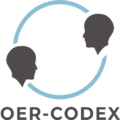Unravelling the Social Fabric of Learning: The Role of Social Network Analysis
In the dynamic landscape of education, understanding the social interactions and networks that form within learning environments is pivotal. Module 5, focusing on Social Network Analysis (SNA) in learning, delves into the intricacies of social interactions and their impact on learning outcomes. This analytical approach provides valuable insights into the collective learning patterns and social dynamics that occur in educational settings.
The Essence of Social Networks in Education
Social networks in educational contexts are not just about who interacts with whom; they are about how these interactions contribute to the learning process. SNA in learning analytics examines the structure and quality of these interactions, uncovering patterns and relationships that might otherwise remain hidden. It involves mapping and analyzing the connections between learners, understanding how information flows within these networks, and how these connections influence learning outcomes.
Investigating Collective Learning Patterns
A key aspect of SNA is understanding how students collaborate and learn collectively. This analysis can reveal the most influential members of a learning community, the formation of study groups, and how peer-to-peer interactions contribute to learning. For instance, students with higher centrality in the network might be more engaged or have a higher influence on their peers’ learning experiences.
Tools and Methodologies in Social Network Analysis
SNA employs a range of methodologies, from simple visual representations of networks to complex algorithms that quantify network characteristics. Tools like graph theory are used to analyze the structure of these networks, identifying key nodes (students) and the connections between them. Metrics such as degree centrality, betweenness centrality, and closeness centrality are used to understand the roles individuals play within the network.
Impact on Learning Outcomes
One of the most significant contributions of SNA in learning analytics is its ability to correlate social network positions with academic performance. Research has shown that students who are more central in the network often achieve better learning outcomes. This could be due to greater access to resources, information, or support from peers. Understanding these correlations can help educators design interventions that promote more effective learning networks.
Challenges and Ethical Considerations
While SNA offers profound insights into learning dynamics, it also presents challenges. Ensuring data accuracy, respecting privacy, and interpreting social data sensitively are crucial. Furthermore, educators must be cautious not to over-rely on network metrics alone, considering the qualitative aspects of social interactions and the individual needs of students.
